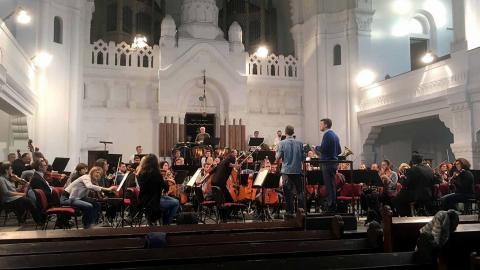Philharmonic Draws Serbia’s Millenials Back to Classical Sounds

Sitting in her sleek office with an immaculately polished grand piano, Milasinovic remembers when things were very different only a few years ago. "The 1990s were a very difficult time for Serbia," she says. "Many musicians retired or moved abroad during this time, and there were often more people on stage than in the audience." Two decades later, she and her team have brought the Philharmonic back to life.
Founded in 1923, the orchestra is younger than most European orchestras. Its golden age came during the 1960s, when it ranked among the top five orchestras in Europe. But it fell on hard times in the 1990s under the repressive regime of strongman Slobodan Milosevic, which had a harsh impact on Serbian cultural institutions. Funding dried up, and by 2000 the orchestra was nearly defunct.
Today, its halls are packed with people of all ages and it appears to be entering something of a second golden age. While orchestras in other European capitals fret about broadening their audience demographics, in Belgrade, while nobody was watching, the Philharmonic completely reinvented the concert experience for the 21st century. Now it regularly packs its hall with both young and old.
A turning point came in 2001, shortly after the fall of the Milosevic regime, when Ivan Tasovac, a pianist trained in Germany, took control of the orchestra with the goal of resuscitating it. "He was not satisfied with just shrugging his shoulders," Milasinovic recalls. "At that time, there was a very optimistic climate and energy in Serbia, and Tasovac took advantage of this."
Tasovac started recruiting young musicians who were returning from studies abroad. By the time the orchestra was re-established, the average age of its musicians was a mere 28, which Milasinovic...
- Log in to post comments









